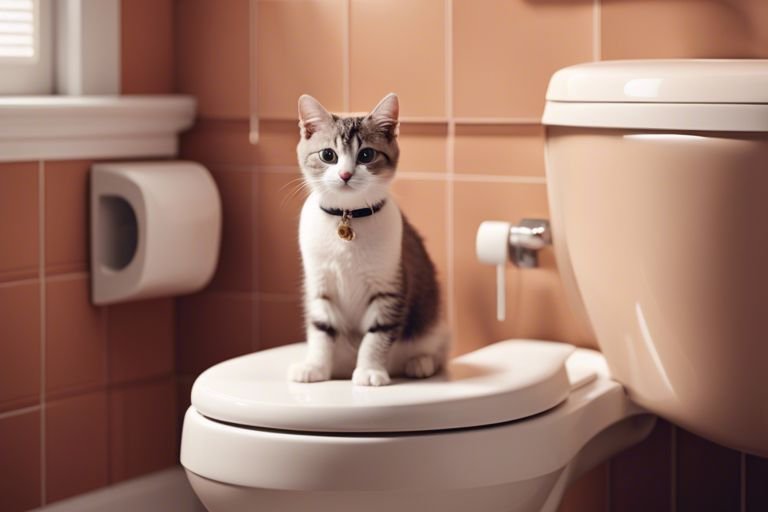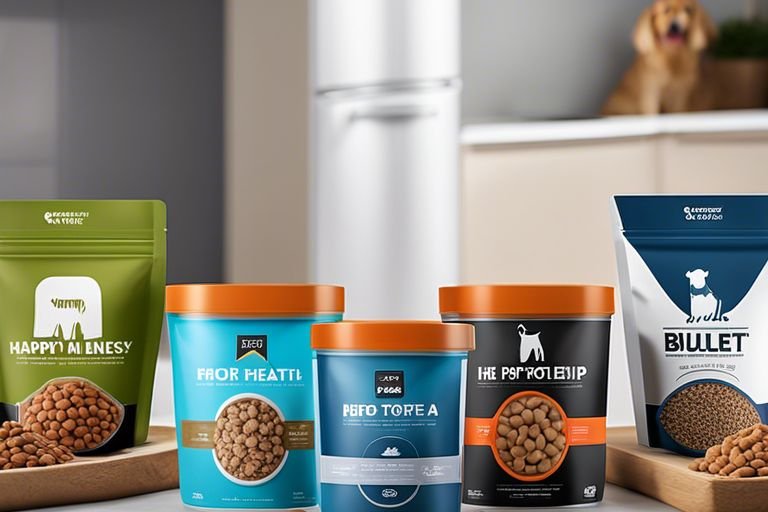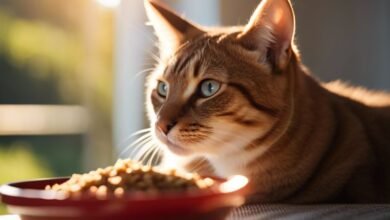5 Reasons Why Low Glycemic Cat Food Should Be A Priority In Your Cat’s Diet
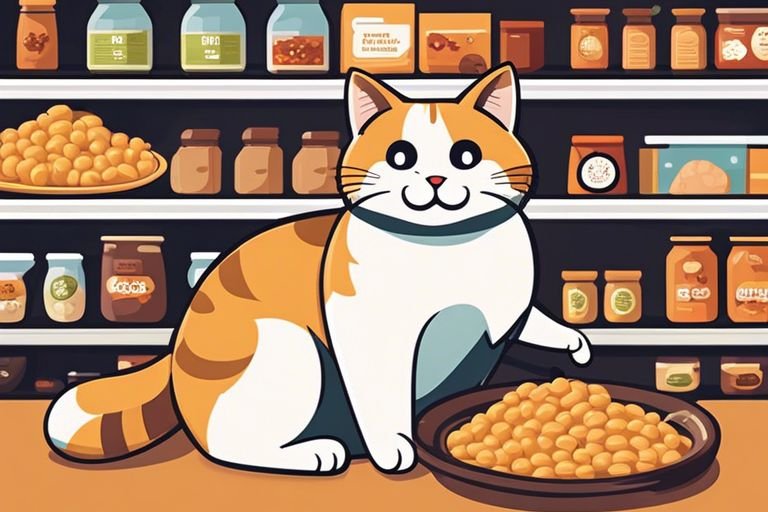
Just like in humans, the quality of ingredients in a cat’s diet plays a crucial role in their overall health and well-being. Low glycemic cat food is gaining popularity for good reason. Here are five compelling reasons why choosing low glycemic cat food should be a top priority when it comes to your feline friend’s diet.
Key Takeaways:
- Control Blood Sugar Levels: Low glycemic cat food can help regulate your cat’s blood sugar levels, reducing the risk of diabetes and other health issues.
- Weight Management: By choosing low glycemic options, you can help your cat maintain a healthy weight and prevent obesity.
- Improved Energy Levels: Cats eating low glycemic food may experience more consistent energy levels throughout the day.
- Prevent Dental Issues: Low glycemic cat food can contribute to better oral health by reducing plaque and tartar buildup.
- Overall Health Benefits: Prioritizing low glycemic cat food in your cat’s diet can lead to improved overall health and wellbeing in the long run.
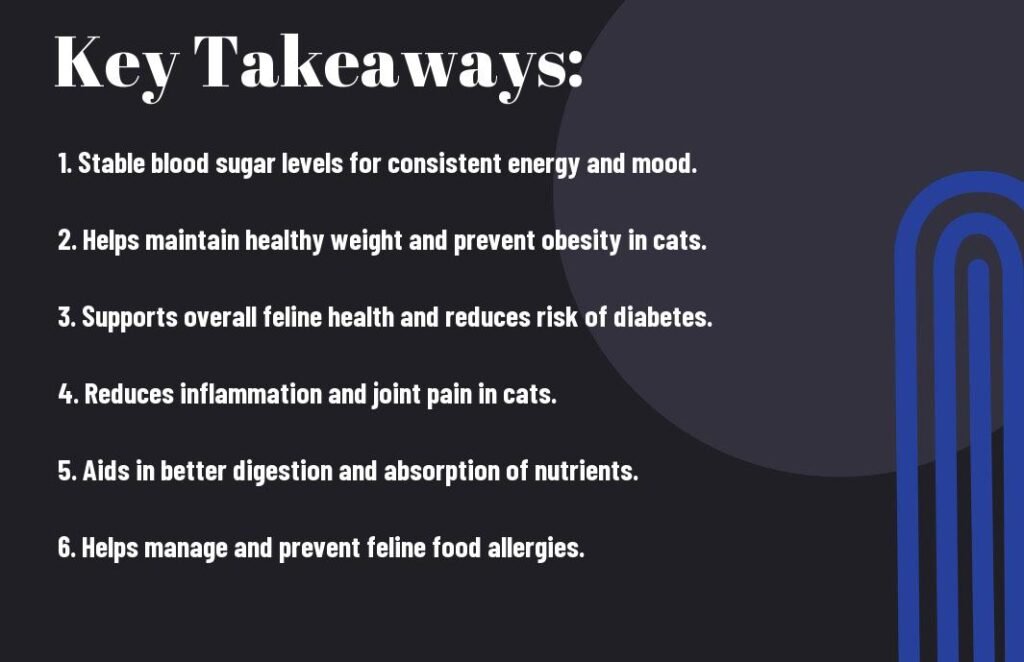
The Importance of Glycemic Index in Cat Nutrition
What is Glycemic Index?
Index, in the context of cat nutrition, refers to the ranking of carbohydrates in food based on their effect on blood glucose levels. The Glycemic Index (GI) is a scale from 0 to 100 that measures how quickly and how much a food raises blood sugar levels. Foods with a high GI are rapidly digested and absorbed, causing a quick spike in blood sugar levels, while foods with a low GI are digested more slowly, leading to a gradual rise in blood sugar levels.
How Does it Affect Cats?
To maintain optimal health, it’s vital to consider the impact of the Glycemic Index on your cat’s diet. Cats are obligate carnivores, meaning their bodies are designed to derive nutrients primarily from animal sources. Therefore, their natural diet would consist of protein and fat, with minimal carbohydrates. High-glycemic diets can lead to fluctuations in blood sugar levels, potentially contributing to health issues such as obesity, diabetes, and inflammation.
It’s crucial to choose low glycemic cat food that helps regulate your feline friend’s blood sugar levels and promotes overall well-being. By prioritizing a diet with a lower Glycemic Index, you can provide your cat with nutrition that aligns more closely with their biological needs, supporting their health and vitality in the long run.
Reason 1: Weight Management
While keeping your feline friend at a healthy weight is crucial for their overall well-being, many cat owners may not realize the significant role that low glycemic cat food plays in weight management. Understanding the correlation between the glycemic index and obesity in cats can help you make more informed decisions about their diet.
The Connection Between Glycemic Index and Obesity
One of the primary factors contributing to obesity in cats is the consumption of high-glycemic foods. These foods cause a rapid spike in blood sugar levels, leading to increased insulin secretion and fat storage. Over time, this cycle can contribute to weight gain and obesity in cats, which can have serious health implications such as diabetes, joint issues, and decreased lifespan.
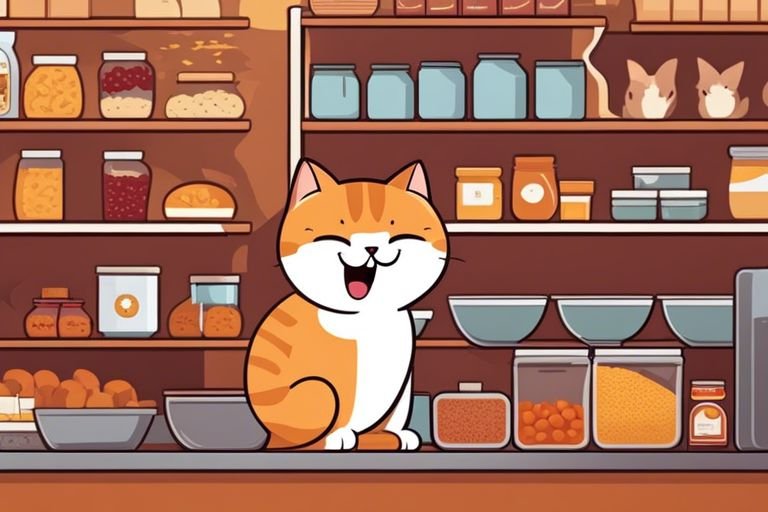
How Low Glycemic Food Can Help with Weight Loss
Connection Switching to a low glycemic cat food can be beneficial for weight management in cats. These foods are digested more slowly, causing a gradual rise in blood sugar levels and a sustained release of energy. This helps prevent spikes in insulin and can aid in weight loss efforts by reducing fat storage and promoting satiety. Plus, low glycemic cat foods are often higher in protein and fiber, which can also help cats feel full and satisfied for longer periods, reducing overall calorie intake.
Reason 2: Blood Sugar Control
The Impact of High Glycemic Foods on Blood Sugar
To understand the importance of low glycemic cat food for blood sugar control, we must first grasp the implications of high glycemic foods on our feline friends. High glycemic foods can cause a rapid spike in blood sugar levels, leading to a surge of insulin production to regulate this increase. Over time, this cycle can strain the pancreas and potentially contribute to the development of insulin resistance or even diabetes in cats. For diabetic cats, proper nutrition is crucial in managing their condition, as highlighted in Diabetes in Cats: What to Feed Your Pet.
How Low Glycemic Food Can Help Regulate Blood Sugar
Reasonably, choosing low glycemic cat food can play a vital role in maintaining steady blood sugar levels for our feline companions. Low glycemic cat food releases glucose more slowly into the bloodstream, providing a sustained source of energy without causing sharp spikes or crashes in blood sugar levels. This steady release of glucose can help prevent the onset of diabetes and aid in managing the condition for cats already diagnosed with it. By prioritizing low glycemic options in your cat’s diet, you are actively supporting their blood sugar control and overall well-being.
Reason 2 highlights the significant impact that low glycemic cat food can have on regulating blood sugar levels in our feline friends. By opting for foods that release glucose gradually into the bloodstream, pet owners can help prevent insulin spikes and dips, ultimately supporting their cat’s metabolic health. This proactive approach to blood sugar control can contribute to a longer, healthier life for our beloved feline companions.
Reason 3: Insulin Sensitivity
The Role of Insulin in Feline Health
Many cat owners may not be aware of the crucial role insulin plays in their feline companion’s health. Insulin is a hormone produced by the pancreas that helps regulate blood sugar levels. When a cat’s diet consistently includes high glycemic ingredients, it can lead to spikes in blood sugar levels that require higher amounts of insulin to be released. Over time, this can contribute to insulin resistance, a condition where the body’s cells become less responsive to insulin’s effects, leading to elevated blood sugar levels and potentially diabetes.

How Low Glycemic Food Can Improve Insulin Sensitivity
Any responsible pet parent should consider the impact of their cat’s diet on insulin sensitivity. By choosing a low glycemic cat food, you can help improve your cat’s insulin sensitivity. Low glycemic cat food contains carbohydrates that are slowly digested and absorbed, leading to gradual rises in blood sugar levels and reduced strain on the pancreas to produce insulin. This can help prevent insulin resistance and promote better blood sugar control in your cat.
Food that is low glycemic can be especially beneficial for overweight or senior cats who may already be at a higher risk of developing insulin resistance or diabetes. The steady release of energy from low glycemic foods can also help maintain your cat’s energy levels throughout the day, supporting overall health and vitality.
Understanding How Low Glycemic Food Can Improve Insulin Sensitivity

Reason 4: Reduced Risk of Chronic Diseases
The Link Between High Glycemic Diets and Chronic Diseases
All living organisms including cats need energy to survive. However, when it comes to cats, the source of energy can greatly impact their health. Between high glycemic diets and chronic diseases in cats lies a significant correlation. Diets high in glycemic ingredients like corn, wheat, and rice can cause a rapid spike in blood sugar levels, leading to a cascade of negative effects on the body over time.
How Low Glycemic Food Can Help Reduce the Risk
An important part of preventing chronic diseases in cats is maintaining stable blood sugar levels. Low glycemic cat food contains ingredients that are digested slowly, leading to a gradual and steady release of glucose into the bloodstream. This helps in preventing the spikes and crashes in blood sugar levels that can contribute to the development of conditions like diabetes, obesity, and even heart disease in cats.
To further reduce the risk of chronic diseases, incorporating low glycemic cat food into your cat’s diet can be a proactive step towards promoting long-term health and well-being. By providing a consistent source of energy without the harmful effects of rapid blood sugar fluctuations, you can help your feline companion lead a healthier and more vibrant life.
Reason 5: Improved Digestive Health
The Impact of High Glycemic Foods on Gut Health
On a high glycemic diet, a cat’s digestive system can suffer due to the rapid spikes in blood sugar levels caused by the intake of foods high in sugar and carbs. This can lead to inflammation in the gut, disrupting the delicate balance of good and bad bacteria in the digestive tract. Imbalances in gut flora can result in issues such as diarrhea, constipation, and even more severe conditions like inflammatory bowel disease.
How Low Glycemic Food Can Promote Healthy Digestion
High-quality low glycemic cat food can help promote a healthy digestive system by providing a steady release of energy throughout the day. These foods are rich in fiber, which aids in digestion and helps maintain a healthy balance of gut bacteria. Additionally, low glycemic foods can reduce the risk of insulin resistance, a condition that can lead to obesity and diabetes in cats.
Impactful in promoting healthy digestion, low glycemic cat food supports the growth of beneficial gut bacteria, which play a crucial role in maintaining overall digestive health. By feeding your cat a diet low in sugar and high in quality ingredients, you can help support a strong and resilient digestive system.
Related Article: 7 Signs Your Cat Needs A High Fiber Diet
To wrap up
As a reminder, prioritizing low glycemic cat food in your cat’s diet can have numerous benefits for their overall health and well-being. By choosing low glycemic options, you can help regulate your cat’s blood sugar levels, maintain a healthy weight, reduce the risk of diabetes, improve digestion, and enhance their energy levels.
Ultimately, making informed choices about your cat’s diet can greatly impact their quality of life and longevity. By giving your feline friend the best nutrition possible, you are ensuring that they thrive and stay healthy for years to come. Consider incorporating low glycemic cat food into their diet today to support their optimal health and well-being.
FAQ
Q: What is low glycemic cat food?
A: Low glycemic cat food refers to cat food that contains ingredients which release glucose into the bloodstream at a slower and steadier rate, helping to maintain stable blood sugar levels in cats.
Q: Why should low glycemic cat food be a priority in my cat's diet?
A: Low glycemic cat food can help prevent obesity, diabetes, and other health issues in cats by regulating their blood sugar levels and promoting overall better health.
Q: What are the benefits of feeding my cat low glycemic cat food?
A: Feeding your cat low glycemic cat food can lead to improved energy levels, weight management, better digestion, and reduced risk of developing diabetes or other chronic diseases.
Q: How can I identify low glycemic cat food?
A: Look for cat food labels that contain high-quality protein sources, healthy fats, and complex carbohydrates like whole grains and vegetables. Avoid cat foods with high levels of simple carbohydrates like corn or wheat.
Q: Are there any potential drawbacks to feeding my cat low glycemic cat food?
A: While low glycemic cat food offers many benefits, it’s imperative to consult with your veterinarian before making any significant changes to your cat’s diet, as individual cat’s nutritional needs may vary.

